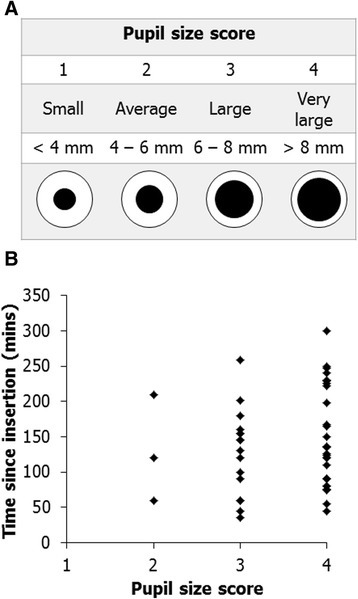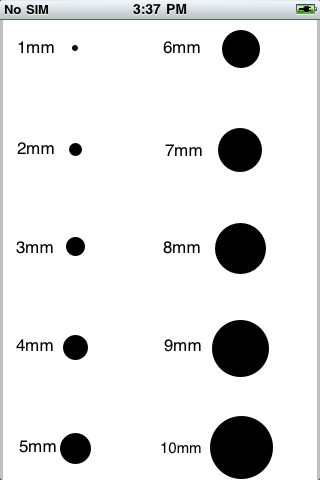
- #PICTURE OF PUPIL SIZE CHART DRIVER#
- #PICTURE OF PUPIL SIZE CHART MANUAL#
- #PICTURE OF PUPIL SIZE CHART PROFESSIONAL#
- #PICTURE OF PUPIL SIZE CHART SERIES#
#PICTURE OF PUPIL SIZE CHART MANUAL#
Word provides a variety of useful predefined layouts and styles that you can select, but you can fine-tune a layout or style if it is needed by making manual changes to the layout and format of individual chart elements, such as the chart area, plot area, data series, or legend of the chart. Instead of manually adding or changing chart elements or formatting the chart, you can quickly apply a predefined chart layout and chart style to your chart.
#PICTURE OF PUPIL SIZE CHART PROFESSIONAL#
In some charts, you can also show a data table that displays the legend keys and the values that are presented in the chart.Īpply special options for each chart type Special lines (such as high-low lines and trendlines), bars (such as up-down bars and error bars), data markers, and other options are available for different chart types.Īpplying a predefined chart layout and chart style for a professional look To make your chart easier to read, you can also add tick marks to an axis, and specify the interval at which they will appear.Īdd titles and data labels to a chart To help clarify the information that appears in your chart, you can add a chart title, axis titles, and data labels.Īdd a legend or data table You can show or hide a legend, change its location, or modify the legend entries. For example, you might want to change the way that axes are displayed, add a chart title, move or hide the legend, or display additional chart elements.Ĭhange the display of chart axes You can specify the scale of axes and adjust the interval between the values or categories that are displayed. Modifying a basic chart to meet your needsĪfter you create a chart, you can modify any one of its elements. A data label that you can use to identify the details of a data point in a data series. A chart and axis title that you can use in the chart.ħ. The horizontal (category) and vertical (value) axis along which the data is plotted in the chart.Ħ.
#PICTURE OF PUPIL SIZE CHART SERIES#
The data points of the data series that are plotted in the chart.Ĥ. You can also remove chart elements that you do not want to display.ģ. You can change the display of the chart elements by moving them to other locations in the chart, resizing them, or by changing the format. Some of these elements are displayed by default, others can be added as needed. Getting to know the elements of a chartĪ chart has many elements. You can also create a combination chart by using more than one chart type in your chart.įor more information about the chart types that you can select in Excel, see Available chart types. When you create a chart or change an existing chart, you can select from a variety of chart types (such as a column chart or a pie chart) and their subtypes (such as a stacked column chart or a pie in 3-D chart). Step 5: Display or hide primary chart axes or gridlinesĬharts are used to display series of numeric data in a graphical format to make it easier to understand large quantities of data and the relationship between different series of data.Įxcel supports many types of charts to help you display data in ways that are meaningful to your audience. Step 3: Add or remove titles or data labels Step 2: Change the layout or style of a chartĬhange the format of chart elements manually Paste a linked Excel chart into your document Insert a chart by embedding it into your document Although the pupillograph can measure the pupil size and reaction time, that doesn't mean it can tell without a doubt whether illegal substances have been consumed, let alone which ones.If Excel is installed on your computer, you can take advantage of the advanced charting capabilities in Word. Yet a normal reacting pupil doesn't automatically mean the subsequent blood test will come back negative.

They may also lead to an enhanced sensitivity to glare." "These symptoms can outlast the subjective effect of the substance for many hours and up to two days. "Cocaine, amphetamine and THC, as well as a limited number of hallucinogens, lead to the pupils' delayed or lack of reaction to light,' he said.

The toxicologist Thorsten Binschenck-Domaß went into more detail about the effectiveness of these kinds of light-driven reaction tests.

But according to Holger Vehren from the Hamburg police's press office, the measuring device isn't "the wonder weapon of drug detection, it's more of a 'pre-test' before a blood test."
#PICTURE OF PUPIL SIZE CHART DRIVER#
Why else would the Hamburg police be running tests on people's pupils? They use a pupillograph, a device that looks like how people in the 60s would have imagined super-futuristic 3D glasses, and it's supposed to be able to tell if a driver is under the influence of drugs or alcohol. However, the eyes still seem to offer clear clues to a person's sobriety or lack thereof.


 0 kommentar(er)
0 kommentar(er)
